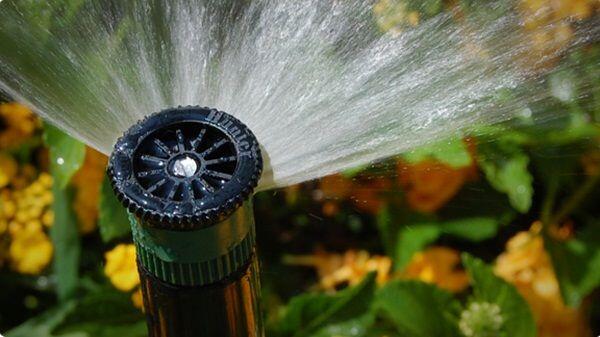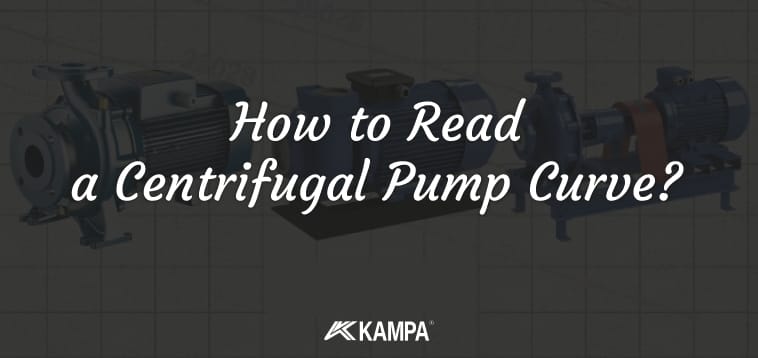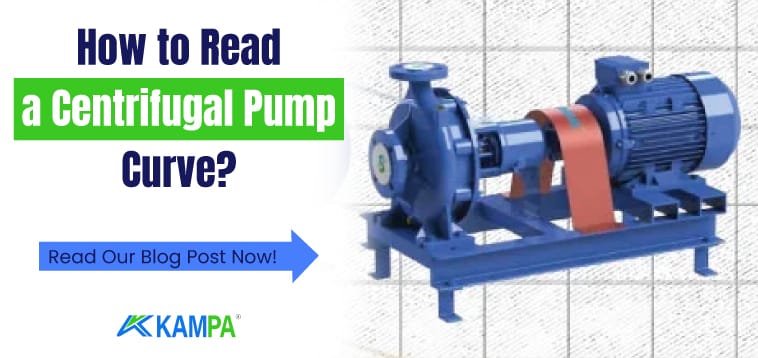How to Read a Centrifugal Pump Curve?
Irrigation pumps are the most widely used pump type. Let’s examine together how to read the centrifugal pump curve for the pump features you will buy. It is used significantly in horticulture in our country.
Table of Contents
It is generally used for irrigation purposes and booster pumps. You can choose the right water pump with pump system curve and centrifugal pump calculation information.
But the solution for every need is different. To choose a centrifugal pump according to your needs, it is necessary to read centrifugal pump curves properly. But none of us are engineers. In this article, I will try to explain to you how to read a centrifugal pump curve in understandable language.
As we continue reading this article, we will learn to read the pump performance curve by answering the following questions.
- What is Centrifugal Pump, What are its Types?
- How to Choose a Centrifugal Pump?
- What is the Importance of the Right Pump?
What is a Centrifugal Pump?
In short, centrifugal pumps, are mechanical devices that move the liquid by means of the energy obtained as a result of rotation between the impellers. It is also known as a water pump or irrigation pump. There are 2 different types, Jet and Saliongoz.
Snail pumps can suction from a maximum depth of 6 meters and Jet pumps from a maximum depth of 9 meters.
For more detailed information, you can read our article What is a Centrifugal Pump?
How to Choose a Centrifugal Pump?
As I said at the beginning, every need has a different solution.

For example: I have a 1 acre field and I am irrigating with a drip irrigation system. The irrigation pump will draw water from a 5 ton tank. The pipe diameter is 1 inch, I need 1 ton of water per hour.
You irrigate with a sprinkler, your pipe diameter is 1.5 inches, you need 3 tons of water per hour and you draw water from the well.
In that case, we can’t both use the same pump.
I need less water, the pipe diameter is small, I draw the water from the tank. Using a small irrigation pump will do the job, it will reduce my energy cost… You need more water than me, the pump I use will be small for you, it will not do the job…
So how do we determine the pump requirement? If we can read the pump curve well, we can reveal its responsiveness to our needs.
- If you have a pump, you can use it as a reference if it is broken or insufficient. You can use an equivalent or higher scale pump
- If you do not have a pump, if you do not have a drawn project, good luck, you have to prepare answers to some questions.

How to Read Centrifugal Pump Curve and Questions to Ask?
- Where will I get water, from a well, a tank, a reservoir?
- If it will draw water from the well or from the minus code, how deep will the centrifugal pump suction from?
- How many meters high will be flooded?
- How many tons of water do you need per hour?
- What is the pipe diameter and pipe type? PVC pipe or Galvanized pipe (this question is for the inlet and outlet parts of the pump)
- Is there a code difference? (It is the height difference. The difference between where the pump stops and where it will pump)
- Will I use elbows and check valves in the irrigation system?
- Is there a slope? How much of an angle at how many meters?
- What is the liquid to be pumped? (Yes! This liquid is not always water. Centrifugal pumps are usually used for irrigation but can also be used to pump other fluids).
With your answers to these questions, you will be 50% closer to choosing the right pump. Of course it is not over. Determining the values does not mean it is over, how do we find the right pump among dozens of pumps?
How to Choose the Right Pump?
Whether you are pumping a chemical, water, oil or any other fluid. Things can get frustrating if you don’t use the right pump.
When I analyze the defective products that come to our technical service, I see that 75% of them are the wrong pump selection and wrong pump usage.

Centrifugal Pump Operating Range
As we mentioned before, all pump types have operating limitations. If it is operating above the specified range, it will damage the pump. Therefore, it is important that a pump operates at its Best Efficiency Point (BEP).
The Best Efficiency Point is not only the point of highest efficiency operation, but also the point at which the speed and therefore the pressure are equal around the impeller and the runout.
As the operating point moves away from the Best Efficiency Point, the speed changes and this changes the impact on one side of the impeller. This unbalanced pressure on the impeller causes radial pressure that drives the shaft:
- Excessive load accumulation in the bearings,
- Wear, breakage, loss of function of the mechanical seal,
- Wear and cracking of shafts…Wear and cracking of shafts…
Unconsciously purchased pumps cause you extra costs over time. Whether it is the need for a new pump, technical service fees, or stoppage of work in case of loss of time… Imagine a field, especially an irrigated field. How many days can that field go without water at most?
With the answers we just gave to the questions, we were 50% closer to the right pump selection. In the remaining 50%, we will read the pump performance curve.
In general terms, I wrote how to read the pump performance curve in my other article. You can take a look for preliminary information. Reading the centrifugal pump curve is more or less the same. If you are ready, here we go.
What isCentrifugal Pump Curve?
In simple terms, a pump curve is a graphical representation of the performance characteristics of the pump. Each pump has its own pump performance curve and a pump that is perfect for a given situation may be completely wrong for another situation.
The selection of the pump is made according to the correct reading of the net positive suction and discharge heights of the pump on the system curve of the formula below. Friction losses are taken into account while controlling the suction height of the pumps.

Generally, centrifugal pump performance curves appear in this way. Values show variability.
The part with Hm(m) is the height. Centrifugal pumps usually use meters . This is called head. If you remember, we answered it in the questions above.
The part of Q(lt/h) is the flow rate. Flow rate is the amount of flow of a liquid over a period of time. So we can say how many tons of water we need per hour.
The graph above shows the water flow rate in liters.
For example, I can use a 6500s coded pump to supply 20,000 liters of water per hour for a height of 9 meters. But if I want 35,000 liters of water per minute with this pump, my maximum pumping height can be 3 meters.
I would like to give a small footnote here. The pressure values of the pumps tell us how many meters high that pump can pump water.
A pressure of 1 bar vertically means that water can be pumped to a height of 10 meters. In horizontal distance, this ratio increases 10 times. In other words, a 1 bar pump at a horizontal distance can push water 100 meters away.
Now we are ready to put these pieces together and find the right pump. We have determined our needs. We can understand the description of the curves. But when we search for a centrifugal pump prices, hundreds of products appear in front of us. Equivalent or similar… How do we filter?
First of all, which type of centrifugal pump do we need? Will we use a centrifugal pump or a jet pump?
(We have already answered this question above. How many meters deep will the water be drawn?)
If we have decided on the pump type, we need to decide on the stage in the second stage.
Double Stage Centrifugal Pumps
High pressure, low flow rate. In other words, they can press high, but the amount of water they give per hour may decrease.
Single Stage Centrifugal Pumps
The pressure is low and the flow rate is high. In other words, the amount of height is low, but the amount of water they give per hour is high.
(I asked you a question above to make this distinction. How many meters high will it flood, how many tons of water will it give per hour)
After overcoming the second stage, the rest is easy. You can use a pump suitable for the data you have by choosing the brand and model.
There are domestic and imported brands in our country. I recommend Sumak pump from domestic brands and Pedrollo pumps from imported brands. They are high quality brands with a wide range of products.
Your needs are not left without a solution. Although I have explained pump selection and pump performance curve, we would always like to share our knowledge and experience with you. Be sure to contact us from our available contact information. Also ask any questions you want to ask in the comments section.
How to read the centrifugal pump curve, please write us your experiences after reading. Click here to review the prices of domestic booster pumps.

